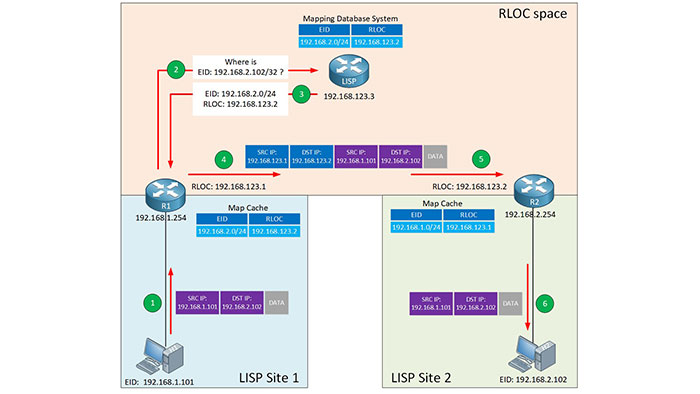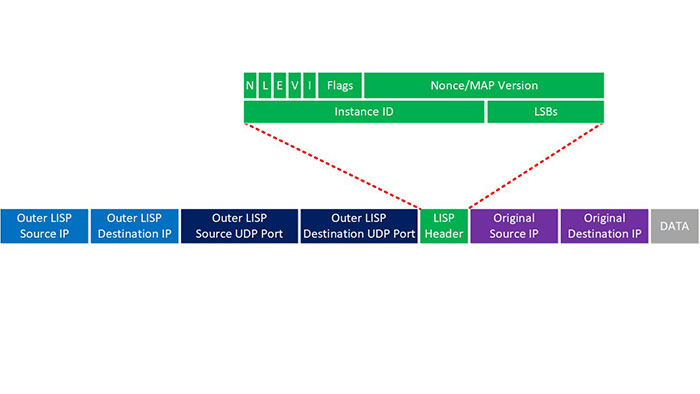
Cisco LISP Protocol
Growing in routing tables caused a heavy explosion of multi-homing topology aware addressing requires a very strict approach. Also, Workload mobility or ability to change attachment to the topology. Furthermore, the dual function of IPv4 address (or any topology-based addressing e.g., IPv6) prevents it from being effectively used in either role and does not fit with traditional routing.
Cisco LISP Protocol or location Identifier separation protocol creates two addresses for each network node. Actually, it’s a combination of your identity and your location. LISP is a type of network architecture and protocol that implements the use of two namespaces instead of a single IP address including Endpoint identifiers (EIDs) which is assigned to end hosts and Routing locators (RLOCs) which is assigned to devices (primarily Cisco Router) that make up the global routing system.
LISP was originally conceived as potential solution to address the scalability and address limitation. LISP solves these limitations by separating the reachability info into the routing locator which is RLOC and EID. This separation allows for the better scale and more agile networks, because the actual endpoint IP address can be abstracted and doesn’t need to be known by the underlay networks.
LISP has many benefits in today’s networking in the WAN and in BGP. Cisco decided to use that in the SD-Access allows for host mobility and flexibility to expand subnet across many switches without having to expand the layer 2 VLAN.

A RLOC is an IPv4 or IPv6 address of an egress tunnel router (ETR). A RLOC is the output of an EID-to-RLOC mapping lookup.
An EID is an IPv4 or IPv6 address used in the source and destination address fields of the first (most inner) LISP header of a packet.
LISP encapsulated packet consists of the payload followed by the IP header plus the LISP header encapsulated in UDP. then the outer IP header which is the underlay IP header and the outer hop by hop Ethernet header.
